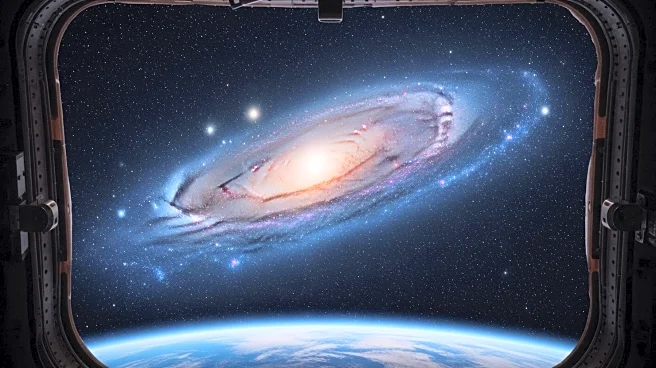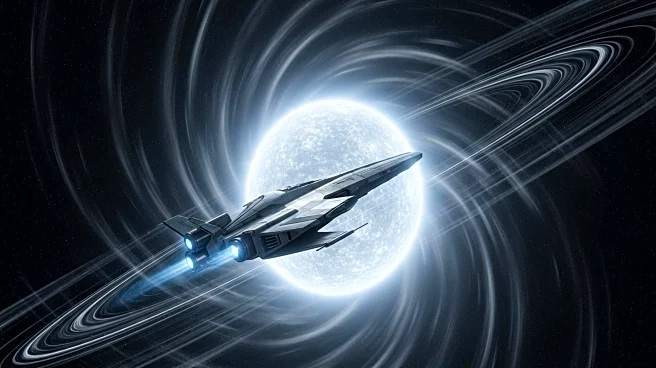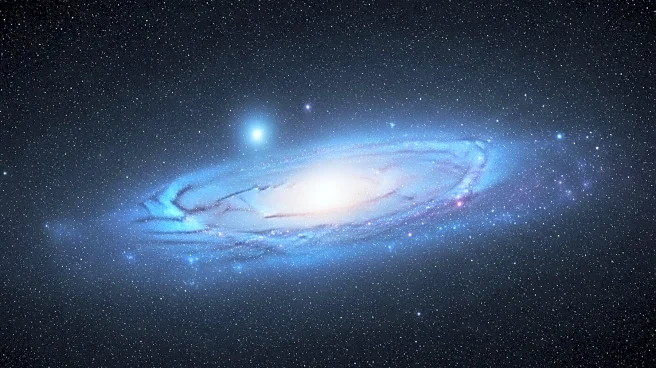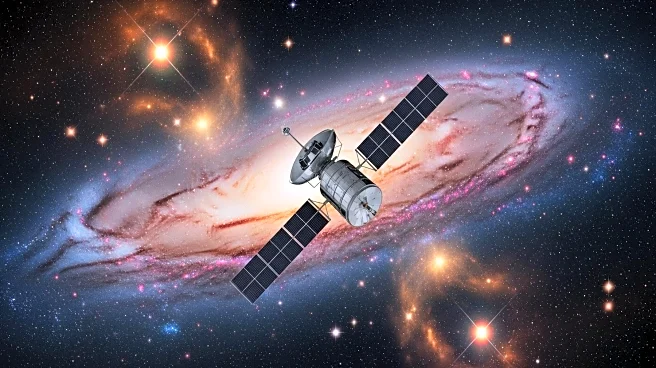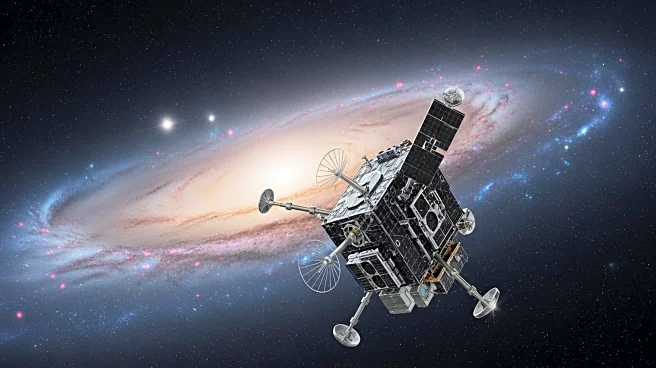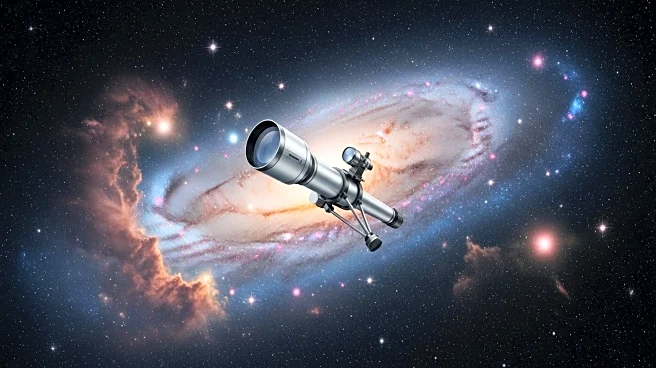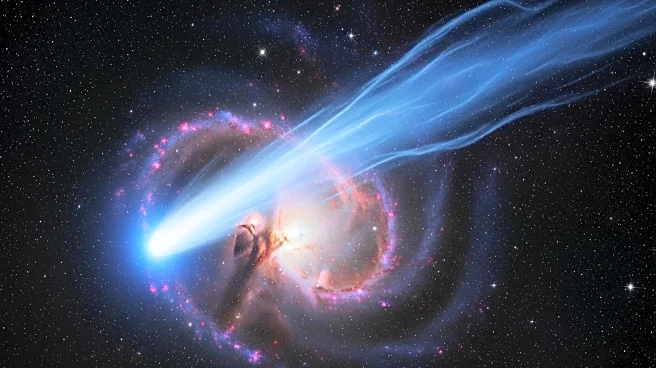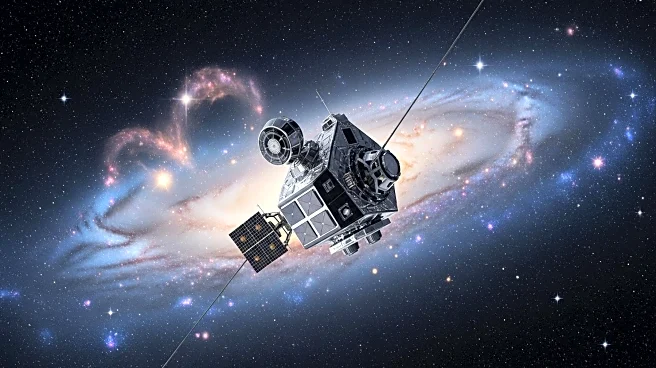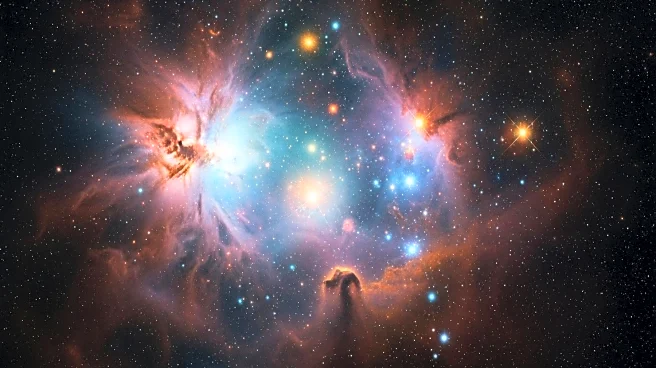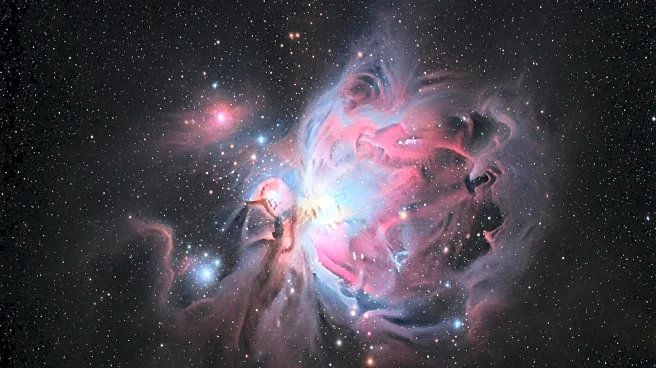What's Happening?
Astronomers have released the most comprehensive 3D map of stellar nurseries within the Milky Way galaxy, utilizing data from the European Space Agency's Gaia space telescope. This groundbreaking map provides a detailed view of star-forming regions that are typically obscured by dense clouds of gas and dust, making it challenging to determine their exact distances. The map extends 4,000 light-years from the sun and includes notable regions such as the Orion-Eridanus superbubble and the Gum Nebula. The data was gathered from observations of 44 million ordinary stars and 87 rare O-type stars, which are massive, young, and extremely bright. The map reveals the shapes, cavities, and relative positions of these stellar nurseries, offering new insights into how massive stars influence their environments.
Why It's Important?
The creation of this detailed 3D map is significant as it enhances our understanding of star formation processes and the impact of massive stars on their surroundings. By visualizing the distribution of ionized gas and the effects of ultraviolet radiation from O-type stars, astronomers can better comprehend the dynamics of star birth and the disruption of galactic environments. This knowledge is crucial for advancing astrophysical models and theories related to the lifecycle of stars and the evolution of galaxies. The map's insights into the rupturing of clouds and the venting of gas and dust highlight the powerful role of massive stars in triggering new waves of star formation, which could have implications for future astronomical research and exploration.
What's Next?
The release of this 3D map opens up new avenues for research into the Milky Way's structure and the processes governing star formation. Astronomers may use this map to refine models of galactic evolution and investigate the interactions between massive stars and their environments. Further studies could focus on the implications of these findings for understanding the lifecycle of stars and the formation of planetary systems. Additionally, the map may serve as a valuable tool for future missions aimed at exploring the Milky Way and other galaxies, potentially leading to new discoveries about the universe's composition and behavior.
Beyond the Headlines
The detailed visualization of the Milky Way's stellar nurseries not only advances scientific knowledge but also raises questions about the ethical and cultural dimensions of space exploration. As astronomers continue to uncover the mysteries of the universe, considerations regarding the preservation of cosmic environments and the potential impact of human activities on space must be addressed. The map's insights into the powerful influence of massive stars may also inspire discussions about the interconnectedness of cosmic phenomena and the broader implications for humanity's understanding of its place in the universe.

